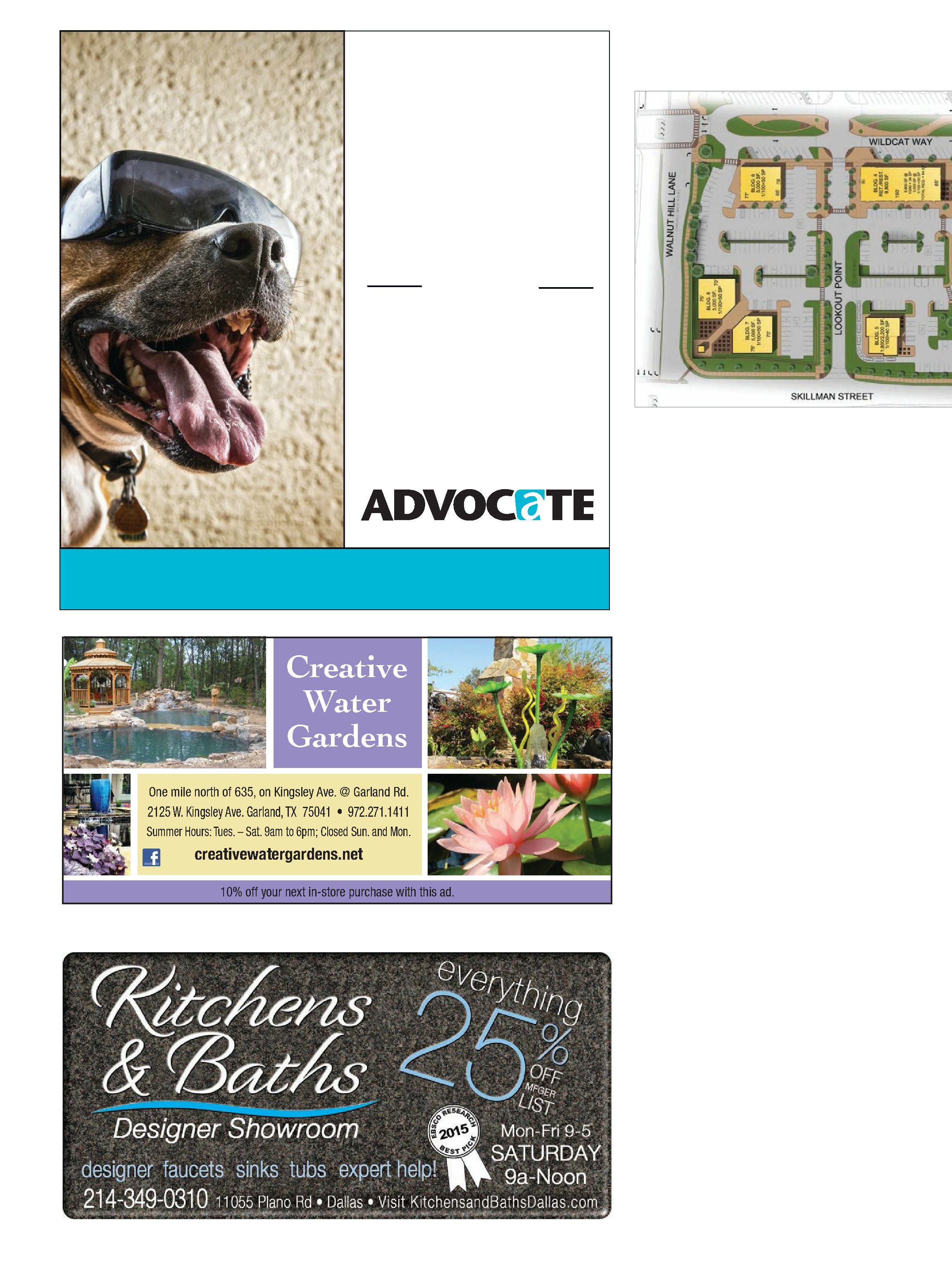
1 minute read
DO YOU HAVE THE BEST PET IN THE
leaving the property along Wildcat Way vacant for now, and rather than spreading out buildings, concentrating the retail “in a way that makes a space and a place, then the parking field can be used as deferred investment,” Sloan says.
The panel also decried the project’s skinny sidewalks, not even wide enough for two people to stroll side-by-side. It’s a “low level problem that gets in the way of things happening correctly,” Sloan says. “Sidewalks shouldn’t create confrontation.”
In urban design, sidewalks should be not only wide and inviting but should run between streets and storefronts, not parking lots. The panel would like to see “a more continuous retail edge” along both Skillman and Walnut Hill, with parking toward the center that, again, could give way to future development.
Ultimately, the panel conveyed its belief that “the short term realities of retail leasing should not precede the attainment of the long-term vision of a true town center development.” With $24 million in tax dollars invested, another $38 million hanging in the balance, and both sides refusing to budge, that’s where the town center stands.
A few days before the June runoff election, Lake Highlands Councilman-elect Adam McGough said he hopes to draw on his training in conflict management and mediation, and try to find middle ground “somewhere between” the original urban vision and a suburban shopping center.

“This is a negotiation,” McGough says, and there is “tension and emotion.”
He says one of his first orders of business will be to host a meeting with the stakeholders, including City Design Studio, the peer review panel, Cypress, community leaders and interested citizens.
“Communities need to trust their intuition,” Sloan says. “Be articulate. Say what you see. Architecture does not have a Hippocratic oath of ‘do no harm,’ and fortunately or unfortunately, we live in an economy that can benefit from some pretty big mistakes.”
One of the problems with America in general and Texas in particular, Sloan says, is viewing land through the lens of extraction — take the oil out of the ground, plant the cotton in the field.
It shouldn’t be about “speculation, shortterm gain, ‘here is what this place can do now,’ ” Sloan says. “City making is about investment, where what you build is directly related to the qualities of what it has to offer.
“What the community is asking is, ‘What will this place have to offer us?’ That’s a very profound question, and it’s different than saying, ‘Well, it’s better than the nothing that’s there.’ ”
Additionalreportingby SamGillespie








